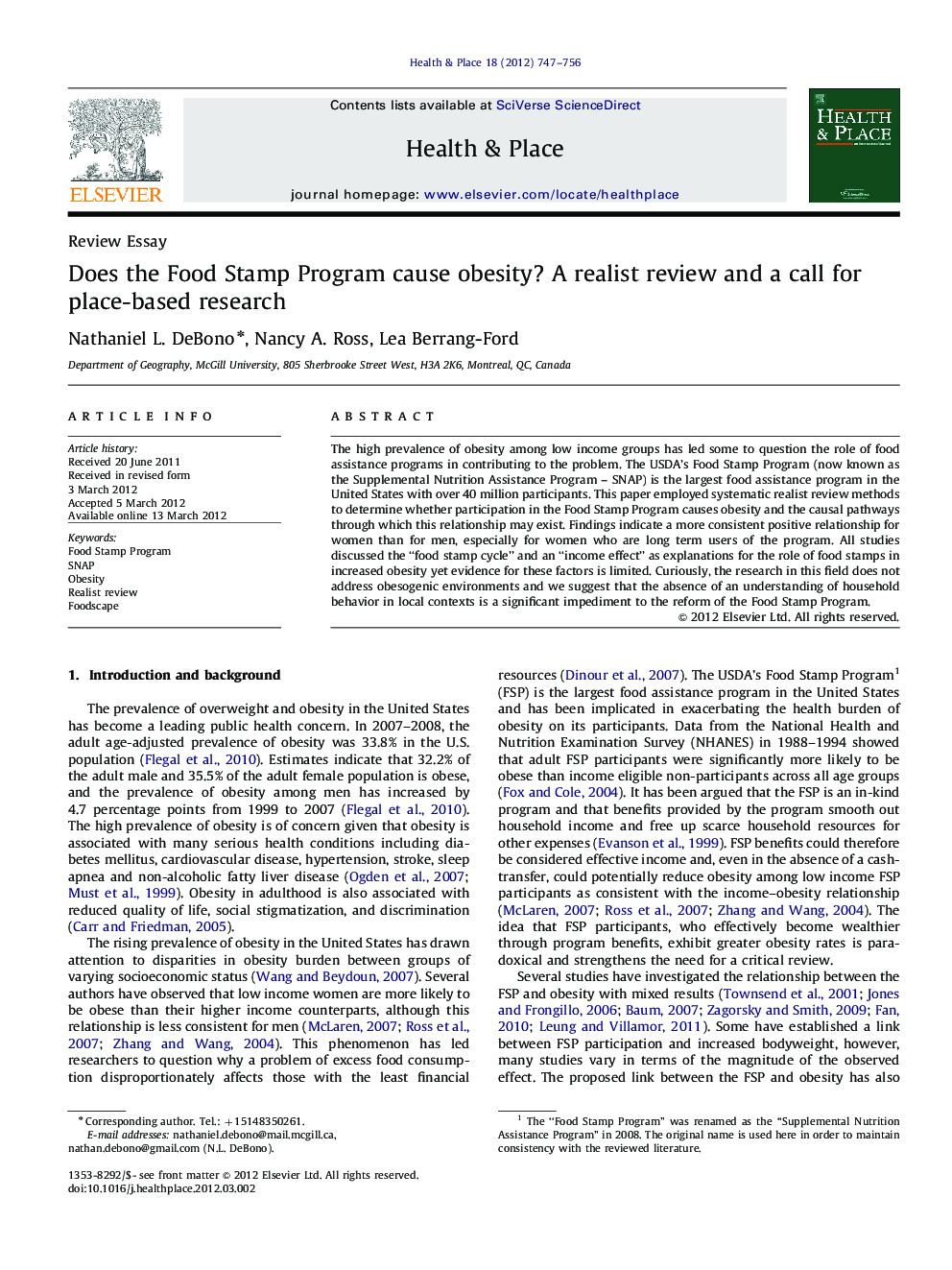| Article ID | Journal | Published Year | Pages | File Type |
|---|---|---|---|---|
| 10502701 | Health & Place | 2012 | 10 Pages |
Abstract
The high prevalence of obesity among low income groups has led some to question the role of food assistance programs in contributing to the problem. The USDA's Food Stamp Program (now known as the Supplemental Nutrition Assistance Program - SNAP) is the largest food assistance program in the United States with over 40 million participants. This paper employed systematic realist review methods to determine whether participation in the Food Stamp Program causes obesity and the causal pathways through which this relationship may exist. Findings indicate a more consistent positive relationship for women than for men, especially for women who are long term users of the program. All studies discussed the “food stamp cycle” and an “income effect” as explanations for the role of food stamps in increased obesity yet evidence for these factors is limited. Curiously, the research in this field does not address obesogenic environments and we suggest that the absence of an understanding of household behavior in local contexts is a significant impediment to the reform of the Food Stamp Program.
Related Topics
Health Sciences
Medicine and Dentistry
Public Health and Health Policy
Authors
Nathaniel L. DeBono, Nancy A. Ross, Lea Berrang-Ford,
